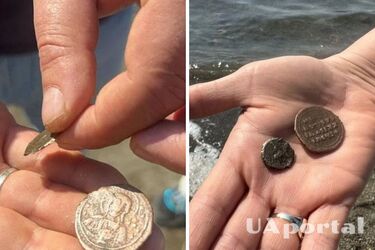Vacationers find ancient coins depicting Jesus Christ at the bottom of a lake in Turkey (photo)

In Turkey, locals began to find ancient coins at the bottom of Lake Iznik, which is gradually drying up. The ruins of an ancient city have begun to appear on the shrinking lake.
According to Arkeonews, this is Lake Iznik, which is located in northwestern Turkey. It turned out that for decades it had been hiding an ancient city that is included in the UNESCO World Heritage List.
The city itself began to emerge from underwater in 2014, when Lake Iznik began to shrink. This process continues to this day.
Recently, a married couple walking along the shore of Lake Iznik found a coin dating back about 2000 years to the Hellenistic period. Later, the couple also found an ancient coin depicting Jesus Christ. Both finds were handed over to the Iznik Archaeological Museum. Scientists at the museum found that the coin depicting Christ dates back to the ninth century AD.


For reference: Lake Iznik is located in the northwestern Turkish province of Bursa. In ancient times, this region was called Nicosia. The city, which is gradually rising from the bottom of the lake, was founded in the fourth century BC. It has preserved many monuments of the Bithynian, Roman, Seljuk and Ottoman civilizations.
The ancient historian and geographer Strabo wrote in his writings that Iznik was founded in 316 BC by Antigonus, the commander of Alexander the Great. Later, Lysimachus, another commander of Alexander the Great, took this city and renamed it in honor of his wife Nikea.
The peak of Iznik's prosperity was in the Roman period. During the Byzantine period, its importance as a religious center grew after Emperor Constantine converted to Christianity in 313 AD. The first Christian council, known as the Great Council of Nicaea, was held in 325 AD in Iznik. It is believed that more than three hundred bishops from different parts of the Roman Empire took part in it.
Earlier in the Gulf of Mexico, the ruins of a nineteenth-century quarantine hospital and cemetery were discovered on a flooded island in Dry Tortugas National Park. Archaeologists identified only one grave, although, according to historical records, dozens of American soldiers could have been buried there.
If you want to get the latest news about the war and events in Ukraine, subscribe to our Telegram channel!
